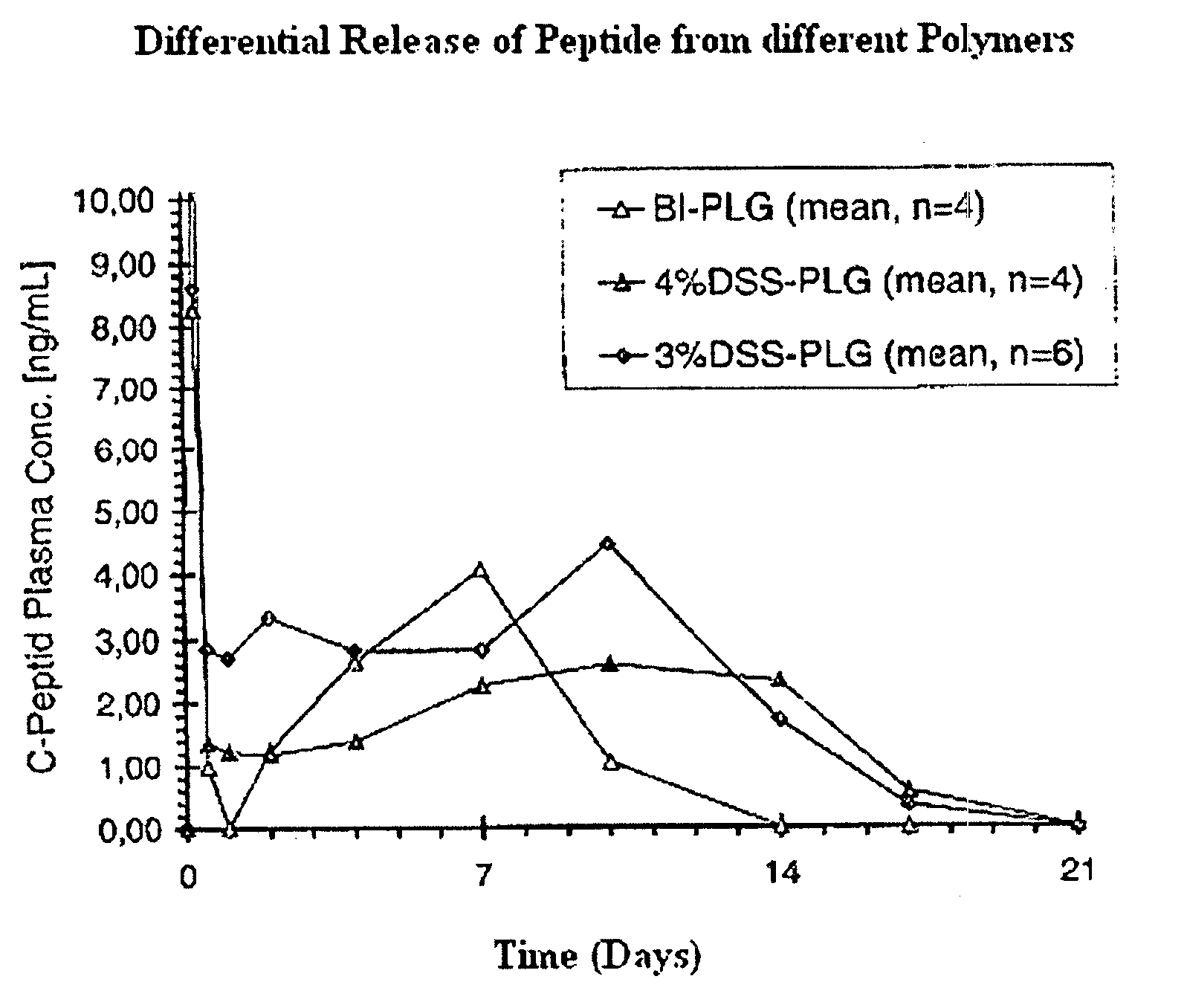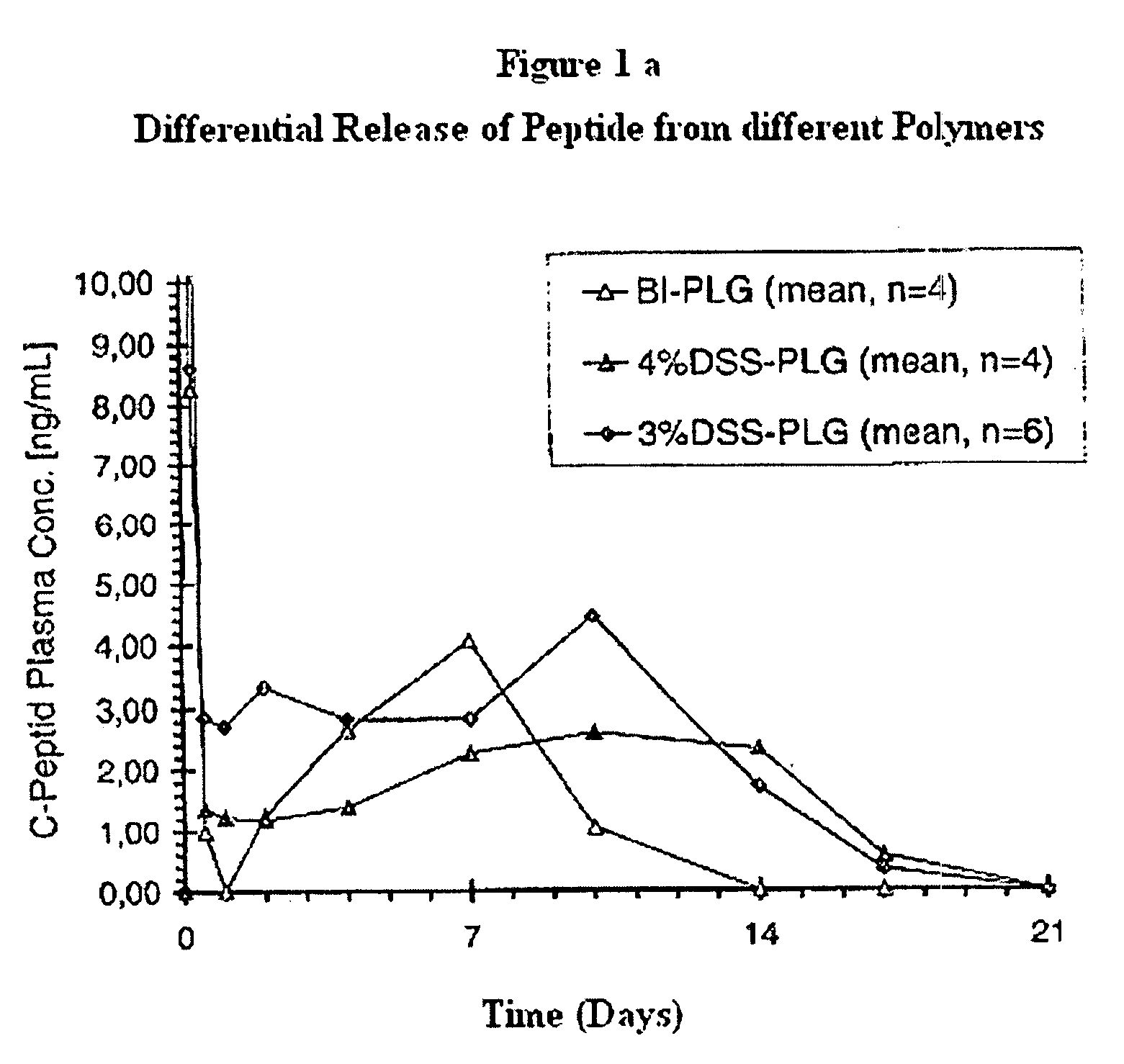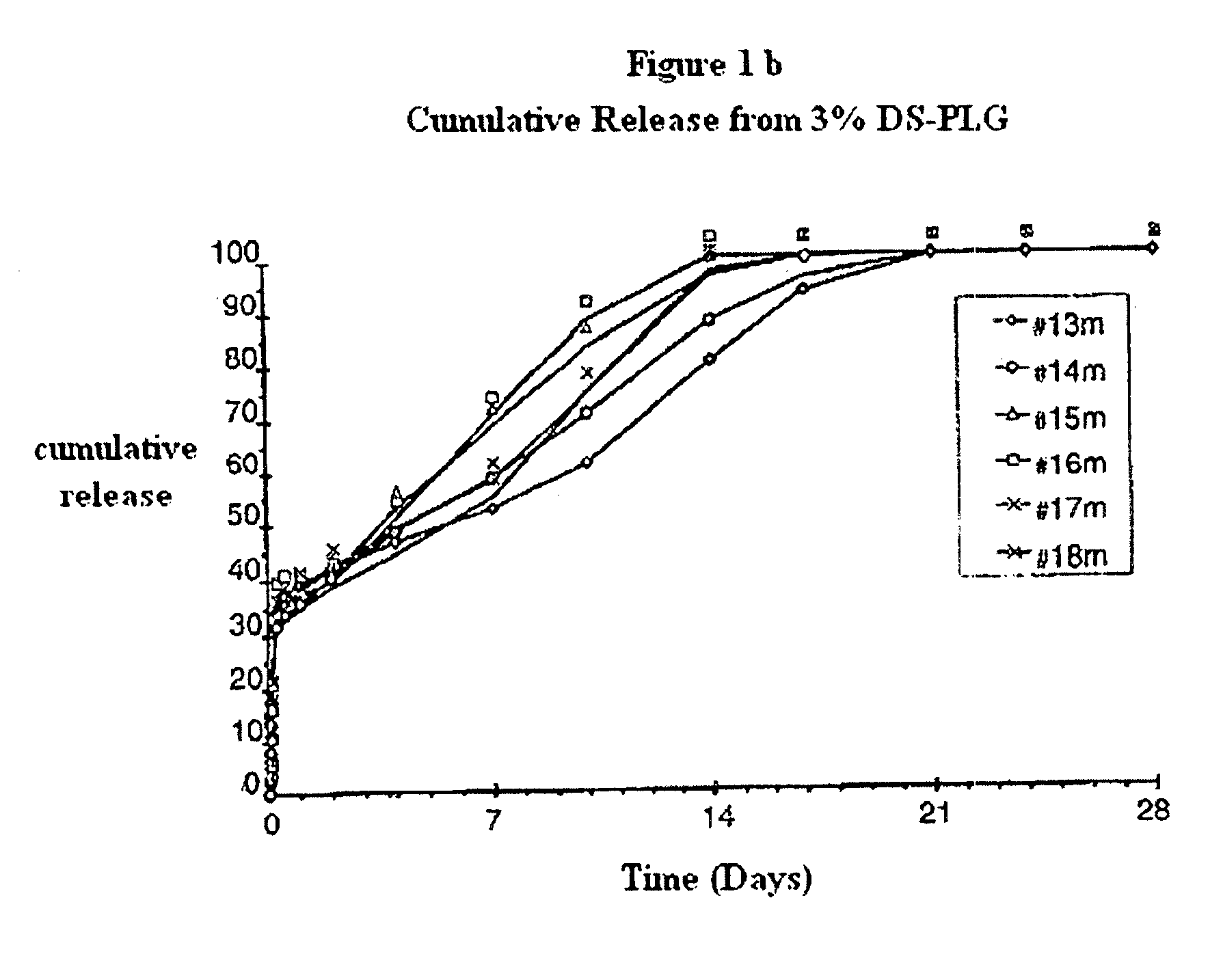Polyesters, method for producing same, and depot medicaments produced from these polyesters
a polyester and depot technology, applied in the field of polyesters, can solve the problems of high initial burst of active ingredients, severe reduction of release phase, and discontinuous release of active ingredients
- Summary
- Abstract
- Description
- Claims
- Application Information
AI Technical Summary
Problems solved by technology
Method used
Image
Examples
implementation examples
EXAMPLE #1
Producing a DS Polyester in the Extruder
[0110]First, the DS is allowed to dry for at least 3 days at room temperature in a medium-high vacuum (about 0.1 mbar).
[0111]53 mol % D,L-lactide, 47 mol % glycolide and the predried DS (2 to 4% by weight) are weighed into a mixing barrel. The combination is homogenized for 30 min. in a gyrowheel mixer.
[0112]The premixed monomer / DS is placed in a proportioning weigher of the extruder (Leistritz dual-screw extruder model LSM 34 GG) and continuously metered into the extruder via proportioning screws.
[0113]A defined quantity of the catalyst, tin (II) 2-ethylhexanoate, is dissolved in toluene and by means of an HPLC pump the catalyst solution is continuously metered into the extruder, at a rate that is so adjusted to the monomer / DS feed rate that the amount of catalyst in the reaction mixture is 1200 ppm.
[0114]This is followed by polymerization in the extruder at temperatures between 170 and 220° C.
[0115]The raw p...
example # 2
EXAMPLE #2
Polyester Analysis
[0117]DS polyesters produced as described in Example #1 were analyzed for their chemical composition, their molecular weight and other characteristic values and compared with commercially available PLG standard polymers. The results are shown in the table below:
[0118]
DSS-PLGDSS-PLGDSS-PLG3% DSS,4% DSS,3% DSSResomerResomerItem Tested(1600 ppm Sn)(1600 ppm Sn)(1200 ppm Sn)RG502HRG503HMw172341413721056885926151[g / mol]Mn948679528493547611469[g / mol]PD1.81.82.51.62.3[Mw / Mn]IV0.250.220.300.210.35[dL / g]Tg39.640.538.938.041.0[° C.]Lac:Glyc53.2:46.853.1:46.951.0:49.052.5:47.552.2:47.8Block Length3.03.4CH Content1325[ppm]Acid Number7.99.06.712.64.2[mg KOH / g]Water Content0.40.50.40.4[%]Sulfate Ash0.00.00.00.0[%]Sn Content1314145112[ppm]Na Content[ppm]S Content[ppm]Mw = molecular weight (average weight); Mn = molecular weight (average number); PD = polydispersity; IV = inherent viscosity; Lac:Glyc = molecular lactide:glycolide ratio; CH = carbohydrate concentration; S...
example # 3
EXAMPLE #3
Removing the Tin (II)
[0127]40 kg of the polymer were placed in a 1000 I agitator. 390 I acetone were then added. The polymer was dissolved under constant agitation. This was followed by the addition of 54 kg (45 I) D,L-lactic acid and agitation of the solution for another 2-3 hours.
[0128]The solution was prefiltered through a 5 μm filter, pumped into the precipitator (two-component nozzle) and then mixed with demineralized water. After the precipitation the water-acetone mixture was siphoned off and the polymer was washed with water. The polymer was then comminuted at a maximum of 30° C. using an Alexander grinder over a screen and finally desiccated in a filtering dryer.
PUM
| Property | Measurement | Unit |
|---|---|---|
| Temperature | aaaaa | aaaaa |
| Temperature | aaaaa | aaaaa |
| Temperature | aaaaa | aaaaa |
Abstract
Description
Claims
Application Information
 Login to View More
Login to View More - R&D
- Intellectual Property
- Life Sciences
- Materials
- Tech Scout
- Unparalleled Data Quality
- Higher Quality Content
- 60% Fewer Hallucinations
Browse by: Latest US Patents, China's latest patents, Technical Efficacy Thesaurus, Application Domain, Technology Topic, Popular Technical Reports.
© 2025 PatSnap. All rights reserved.Legal|Privacy policy|Modern Slavery Act Transparency Statement|Sitemap|About US| Contact US: help@patsnap.com



